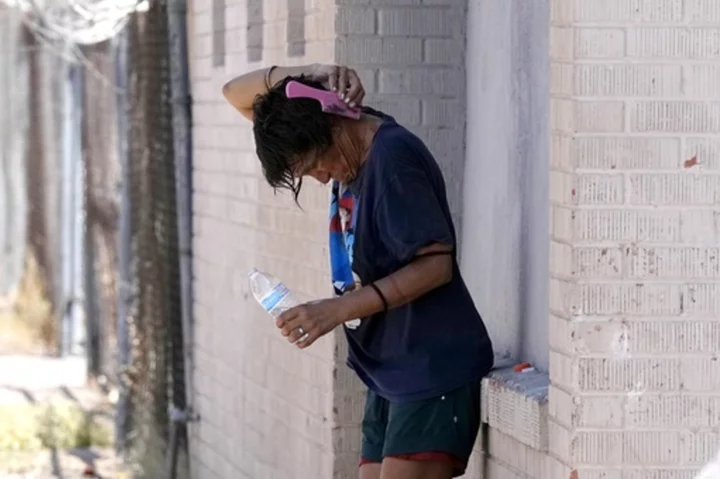PHOENIX (AP) — Longtime Phoenix residents know that sweltering Julys are to be expected, but no one could have predicted the brutal heat wave that has enveloped the country's fifth largest city this summer.
Phoenix this month shattered its record for consecutive days in which the temperature reached at least 110 degrees (43 Celsius), standing at 26 days and counting as of Tuesday, when the forecast called for a high of 118 (48 C). The record was likely to grow Wednesday, with a high of 119 degrees (48 C) expected.
A bit of relief might be on the horizon, though, after this week.
“It seems unlikely we’ll see over 110 every day through the end of the month,” said meteorologist Isaac Smith, of the National Weather Service in Phoenix. “We are expecting to see the highs fall through this weekend, with chances for monsoon rains rising to 40-50%. By next Monday, we expect a high of 108.”
Before this year, the longest stretch of days where temperatures reached at least 110 degrees was 18, in 1974, said Dr. Erinanne Saffell, Arizona's state climatologist.
Phoenix is also on pace to record its first month where the average temperature was at least 100 degrees. Next Monday might be the only day with a high under 110 (43 C) and the only July day with measurable rain.
In Arizona, the monsoon season officially begins June 15 and can bring powerful storms with high winds, lightning and heavy bursts of rain.
Phoenix last got measurable precipitation on March 22.
“In the early 1900s, Phoenix had about five days on average every year that were 100 degrees (38 C) or higher,” Saffell said. “Now, we’re five times that number on average.”
While there have been some monsoon thunderstorms in northern and southern Arizona, Phoenix remains well below the average amount of precipitation for this time of year. It is especially aggravating for a region enduring drought conditions.
Phoenix is also breaking or matching other records. It tied a daily heat record Monday as temperatures reached 116 degrees (47 C). That record high was set in 2018.
The National Weather Service has extended the excessive heat warning, which has been in effect since July 1, through Thursday night.
It's too soon to predict if climate change guarantees Phoenix will see a repeat performance next summer, according to Saffell.
“It kind of goes back and forth. We’re looking at coming out of two really wet summers,” she said, referring to 2021 and 2022. “We usually don’t have three in a row ... but having that heat dome really brought in those temperatures.”
Arizona is not alone. Blistering heat has also swept other parts of the Southwest including New Mexico and Nevada.
___ Associated Press writer Anita Snow contributed to this report.









